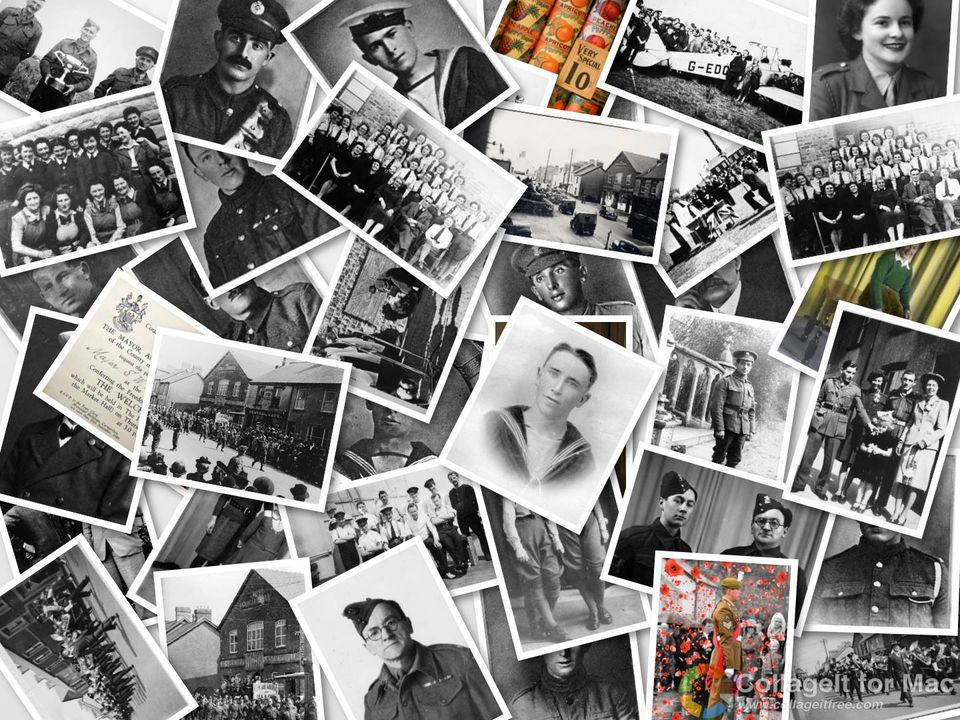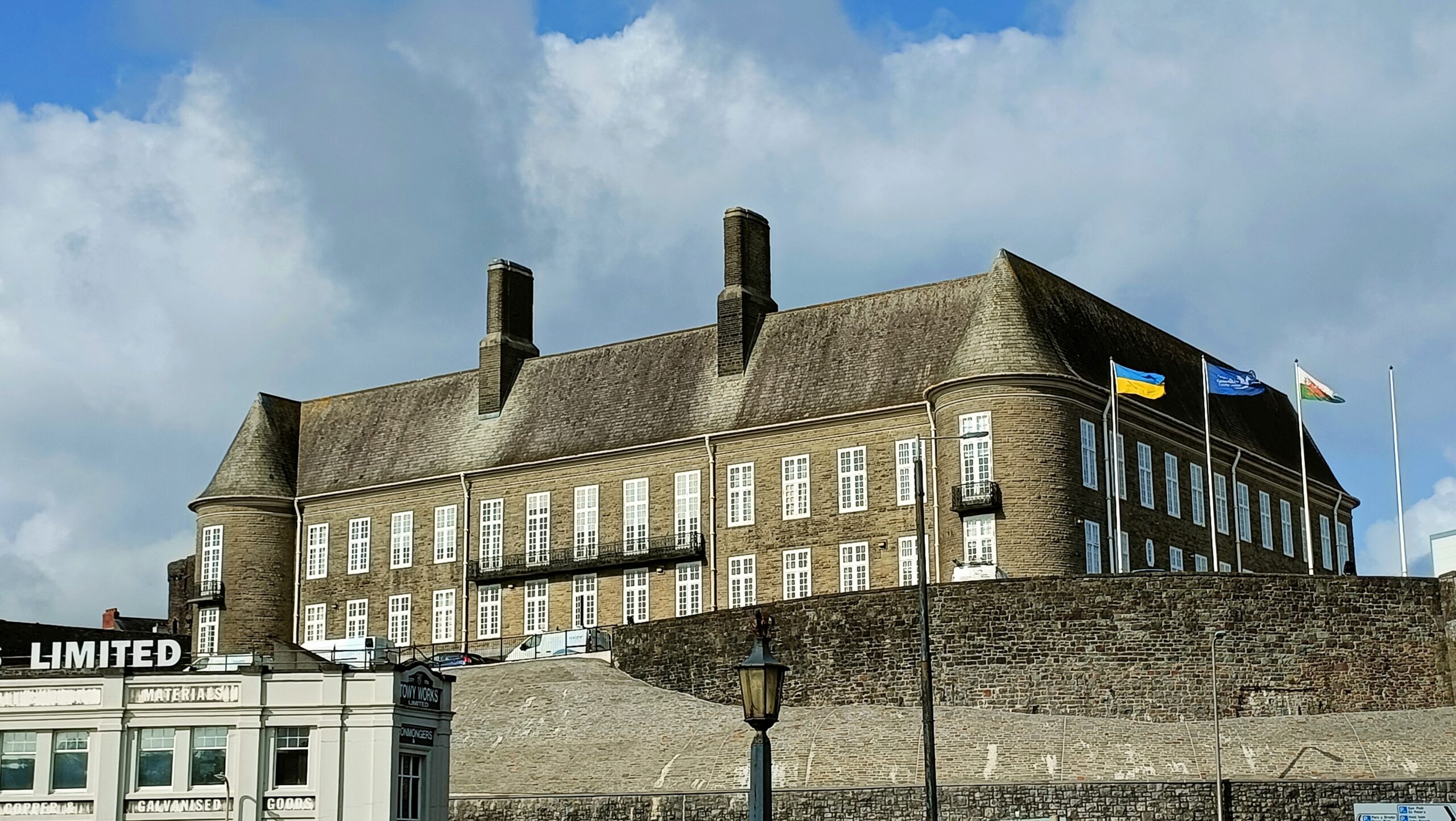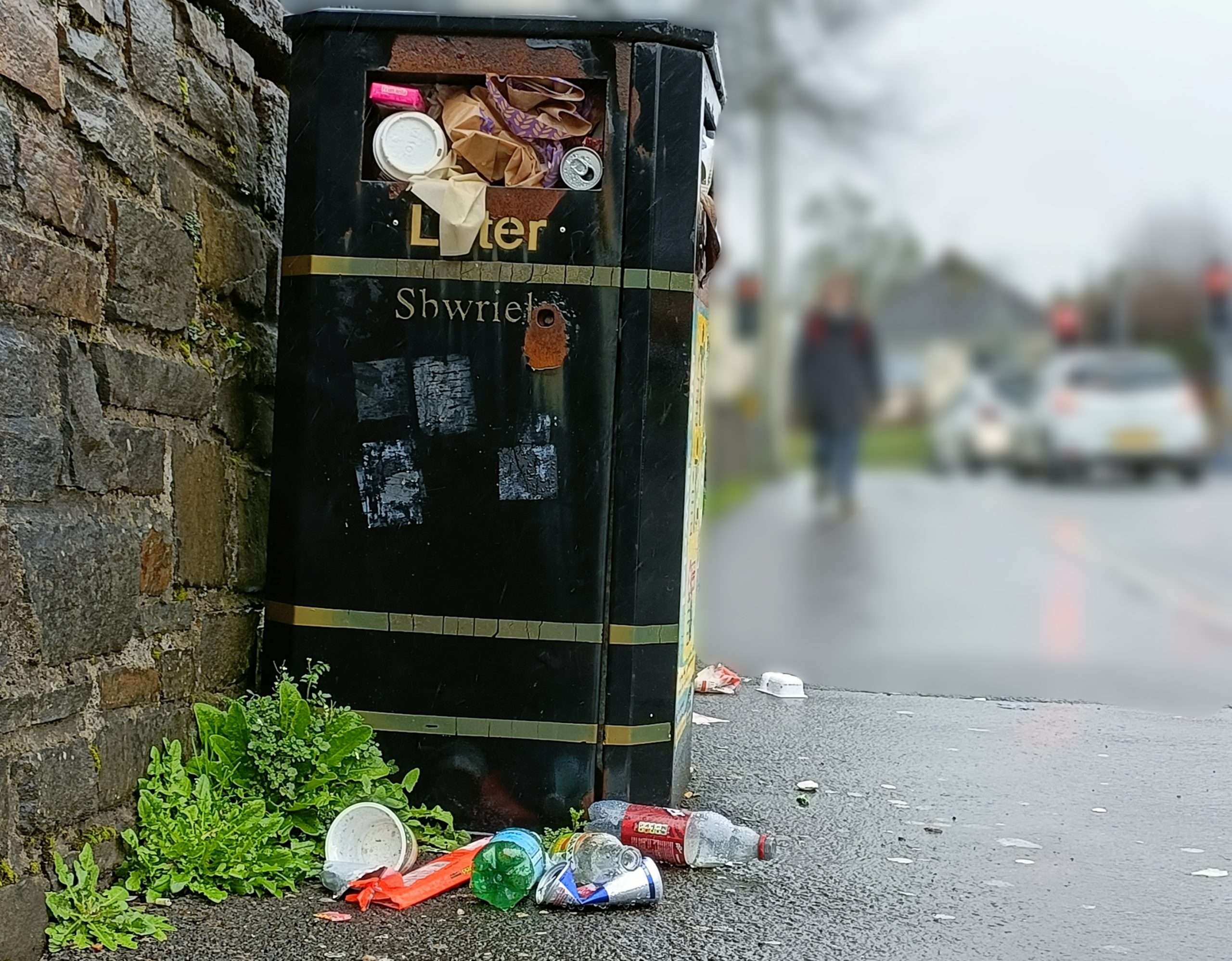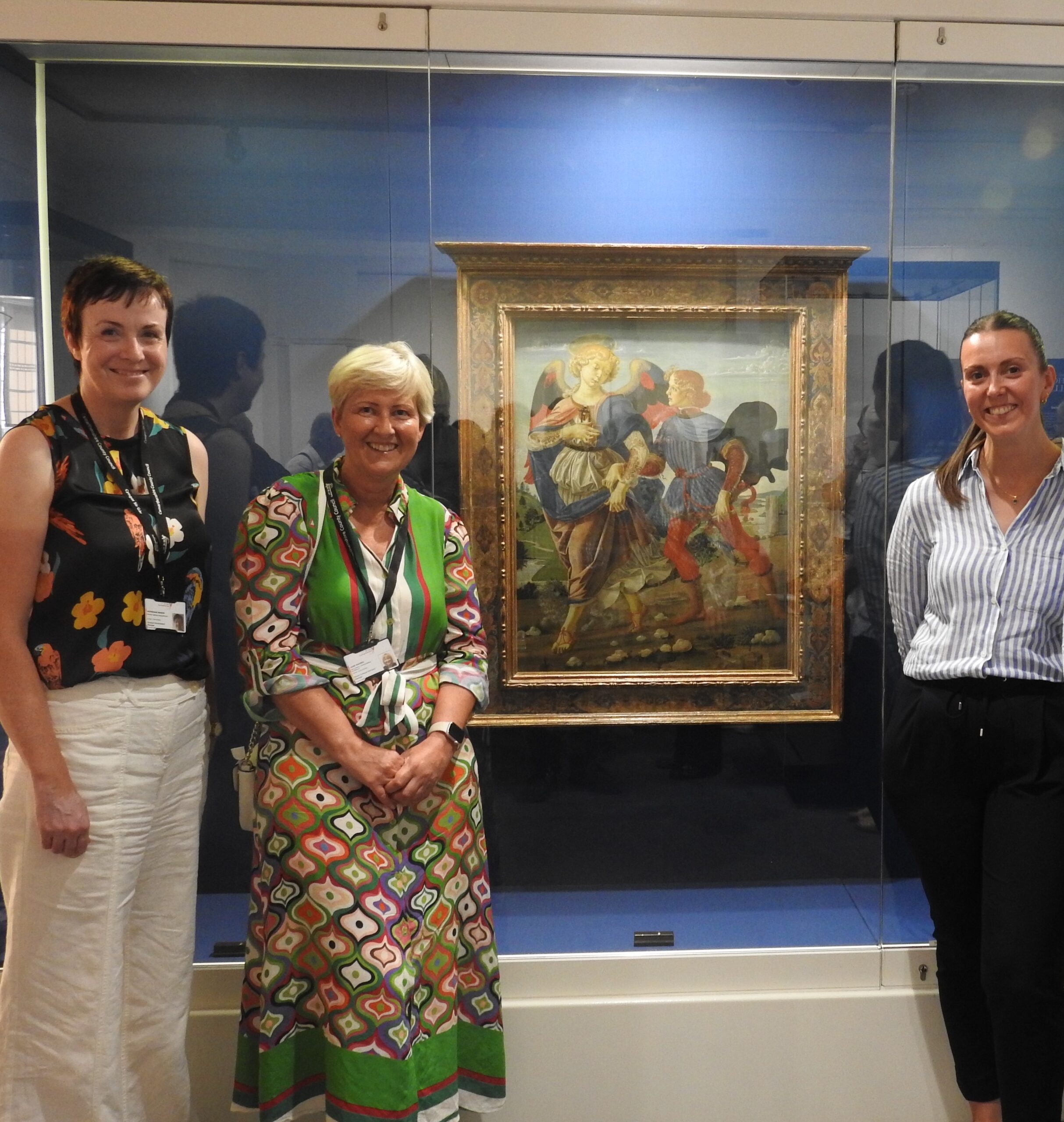Stanley Phillips was a young boy not quite of age to join up during World War 1. Despite this the young Stan enlisted the help of the local Vicar who wrote him a reference. Stan may have fibbed about his age but he managed to enlist.
Photography was in its infancy and the young Stan took a shine to it. Photography became his love next to his sweetheart Gwladys who remained home and waited for his return. Stanley learned his trade and upon return from the war he opened a small shop and photography studio in St Clears.
Stan made a window display of all the men who had served from the town and propped in the centre was a portrait of the King. The quiet unassuming photographer set about creating a montage of images of the men from Elim Chapel. Remarkably they had all returned alive. No Photoshop in those days. He painstakingly worked in the dark room and when finished he presented each of the men with framed photos each numbered, each with the name of the chapel.

©Stanley Phillips Archives
He took numerous photographs of the men who served and of the men he served with in the home guard during the Second World War. Images of the Welsh maverick Ira Jones, images of the ships Stan served on and in his later days, famous people he knew and met like Parry Thomas the man who drove Babs at Pendine and the pilot Amy Johnson.

A staunch British Legion man he always provided something for the community he lived in whether it was the first radio set or the first TV set, Stan would invite the village along to share in his pioneering way of life.

Stan’s family discovered his collection of photos and his camera equipment some years ago and we helped restore and archive the photos and films. Some of it has been sent to the National Library of Wales and some has been used in news items covering various wartime anniversaries. There have been books published including Stan’s wartime diary where he describes racing the sister ship of the Titanic, The Megantic back to port. He describes giving a gun salute to the Kaiser just before the outbreak of World War 1 and he describes how they had to make a split decision whether to serve the war out in Norway or make a dash back to Britain.

His photographs have appeared in an essay about life in St Clears from the early 1900s onwards. There is also a film documenting village life with football games, potato planting, harvesting, hunting and Sunday school outings.
It is a prolific archive, which his daughter Stella has lovingly cared for and shared with the wider world. The exhibition pieces are still available for any venue, which would like to host it. It includes many historical events such as the murder hunt for the Cadno Farm killer who turned out to be local man Ronnie Harries. Images of Babs, Amy Johnson, GWR steam trains leaving the Isambard kingdom Brunel railway station. There are still some books and DVDs in circulation and the centre piece of the exhibition is Stan’s very own mahogany and brass camera complete with original tripod.
We often forget the men who served with a camera and who documented the atrocities but also the heart warming moments and possibly the last image their loved ones would ever see. The importance of Stan’s work should never be underestimated and he deserves to be front and centre of any event, which commemorates the war given that for most of the time, he was the one out of the picture.
For further information regarding the work of Stanley Phillips email newsdesk@llanellionline.news
Please donate here: Support Carmarthenshire News Online Thank you for supporting independent journalism and contributing to the future of local news in Carmarthenshire. Carmarthenshire News Online has been dedicated to providing unbiased and trustworthy news, free from commercial or political influence. By donating as little as £1, you can help ensure the continuation of this important source of information for the community. Your contribution will have a significant impact on the sustainability of independent journalism. If you're looking to enhance your brand's visibility, we also offer advertising opportunities on our Livestream and podcasts. Our special offers provide excellent value for reaching our engaged audience. To learn more about these opportunities and to discuss your advertising needs, please feel free to call or text us at 07308598604. Thank you again for your support, and together we can ensure the availability of quality local news for Carmarthenshire and beyond.
Please donate here: Support Carmarthenshire News Online







